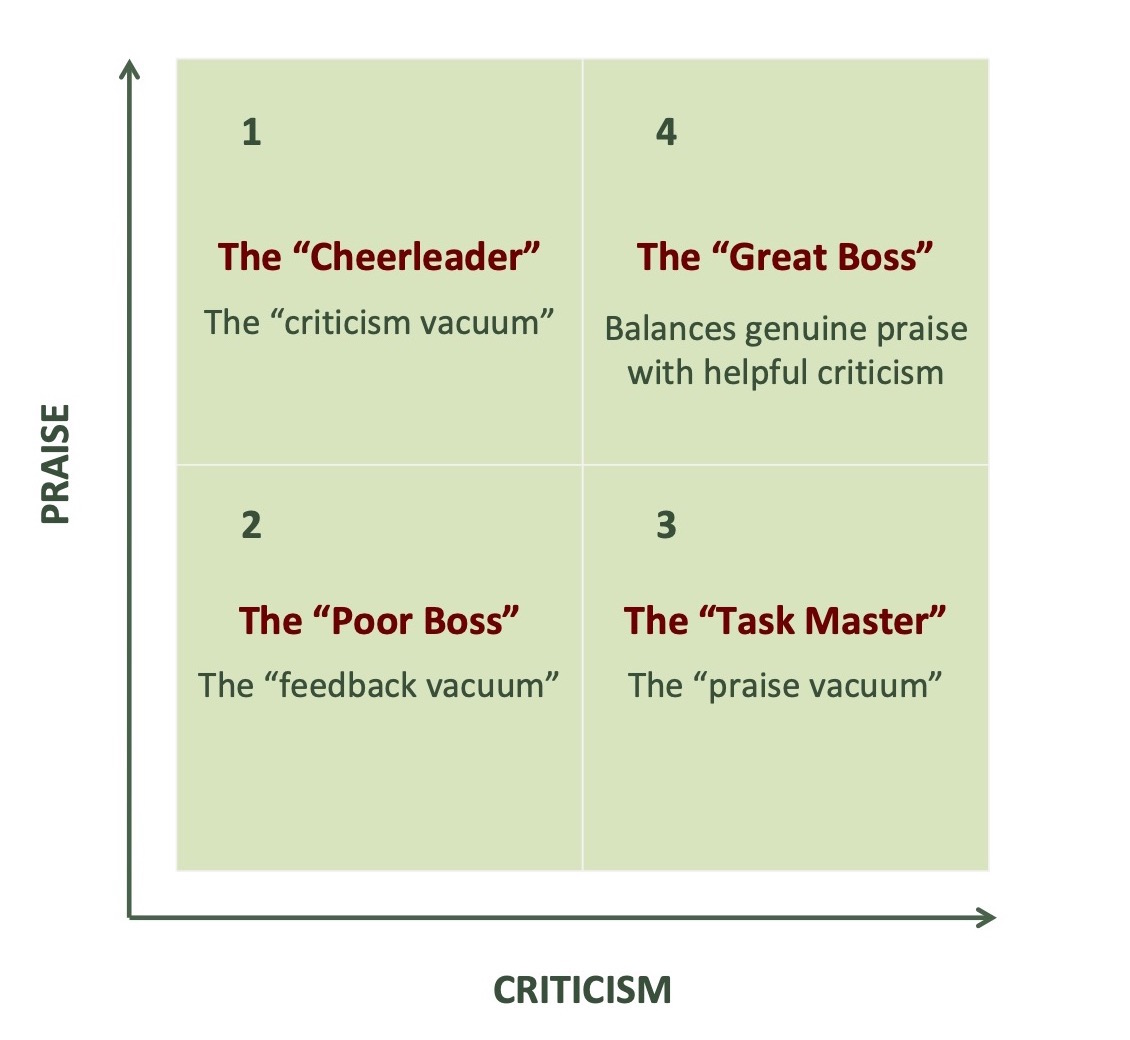What’s the ideal balance between positive and critical feedback when coaching employees? With your kids? How about with your significant other? Well, it depends.
The ideal balance of positive and critical feedback with your significant other.
Research indicates that if you give your significant other critical feedback (and you want the relationship to last), you need at least a 5:1 ratio of positive versus critical feedback. This gives you a positive buffer if you screw up…kind of like having money in a savings account for when something goes wrong or breaks, the money is there if needed.
If you prefer watching a video over reading text, take a look at the following.
The ideal balance of positive and critical feedback with kids.
To bring out the best in kids, as a baseline, use the same 5:1 ratio above. Additionally:
- Beginners may need 100 percent positive feedback. When teaching a new skill, provide close to 100 percent positive feedback. This helps your child learn the correct way to perform the skill. As she or he begins to master the skill, give an increasing amount of critical (or corrective) feedback to correct mistakes. This is not only true for kids, it also applies to adults. Research indicates that positive feedback motivates individuals who are beginning to learn a new skill and corrective feedback motivates experts’ desire to improve.
- Give corrective feedback. Once your child knows the basics of what to do, when he or she makes a mistake, give corrective feedback (how to do it more correctly) rather than giving critical feedback. Here’s an example. You’re potty training a little boy and he relieves himself in the bathroom waste basket rather than the toilet. Critical feedback might be: “No, not in the waste basket!” Corrective feedback could be: “You’re getting closer. Can you hit the water with your pee pee and make it splash?” I’ll let you come up with your own example for adults. I once had to teach this concept to a head coach of a professional sports team! Once he embraced it the whole culture changed and they turned a losing season into a playoff season. (To learn more, please go here.)
The ideal balance of positive and critical feedback with employees.
In Gino Wickman and René Boer’s book “How to Be a Great Boss,” they state, “Great bosses give both genuine praise and helpful criticism [corrective feedback].” And they define four types of bosses:
Quadrant 1: The “Cheerleader” praises effusively, which usually become disingenuous and can lead to under-performance and poor morale.
Quadrant 2: The “Poor Boss” just doesn’t give feedback, which leaves employees wondering what’s expected of them, how they’re doing, and how they can get a better job and boss.
Quadrant 3: The “Taskmaster” doesn’t believe in the value of praise and is either afraid to praise or thinks praise would lead to mediocrity, or even reward seeking…suck as asking for a pay increase. Lack of positive feedback leaves people wondering if they can ever meet expectations, and it can damage their confidence in performing their jobs.
Quadrant 4: The “Great Boss” gives authentic praise and corrective feedback to develop high-performing individuals, teams, and a healthy organizational culture with high levels of accountability.
The “Great Boss” provides:
- A 5:1 ratio of compliments to corrective feedback (in general).
- Corrective feedback using a constructive tone of voice.
- Different amounts of positive versus corrective feedback, based on the employee’s skill, or competency level.
If you are a manager or leader in business, your family, or any group or team, applying the ideal balance between positive and corrective feedback will help you and others to succeed.



